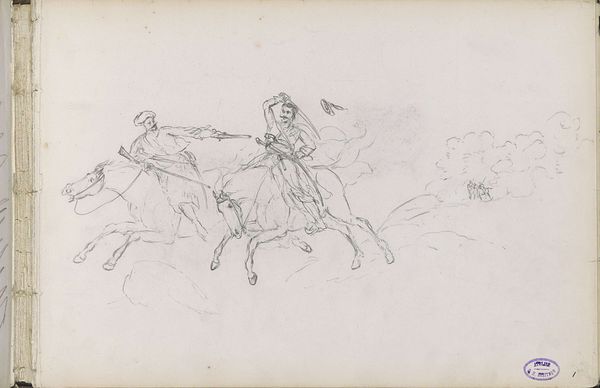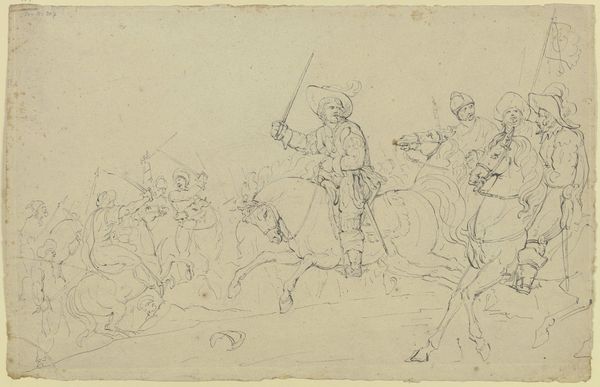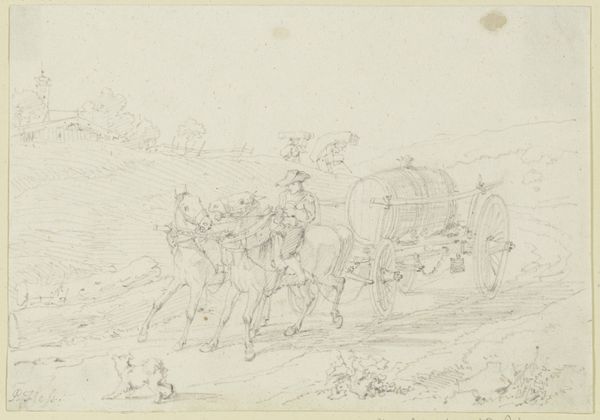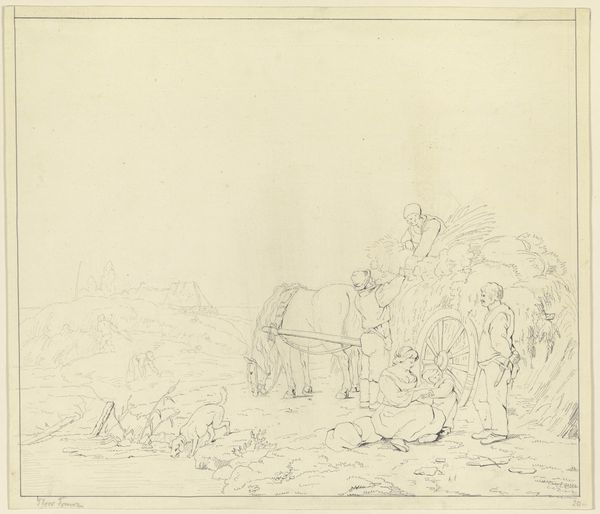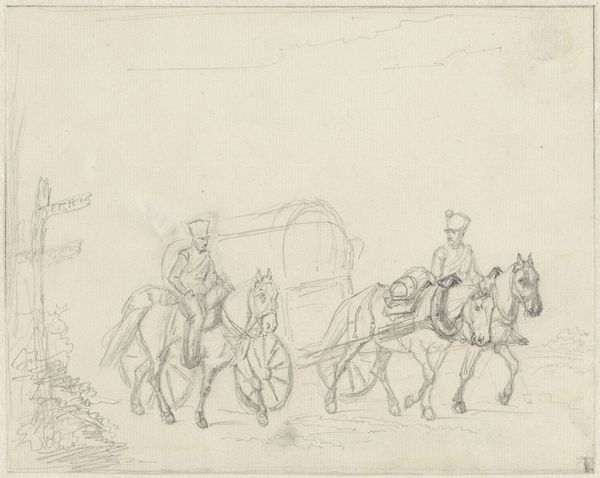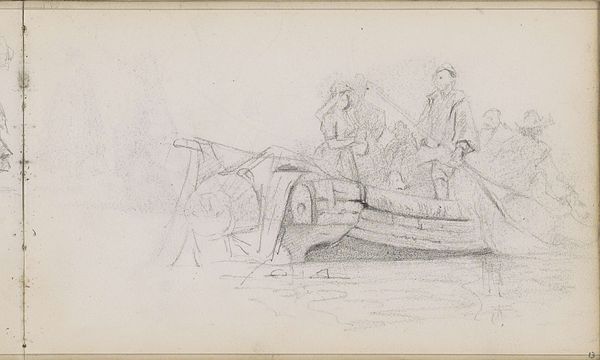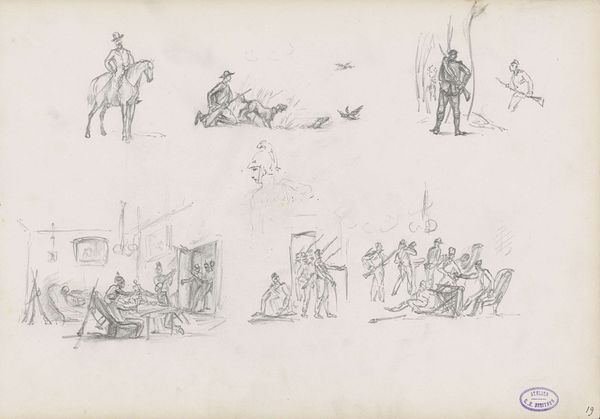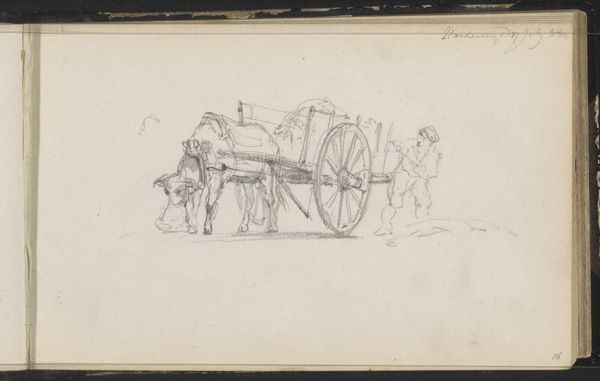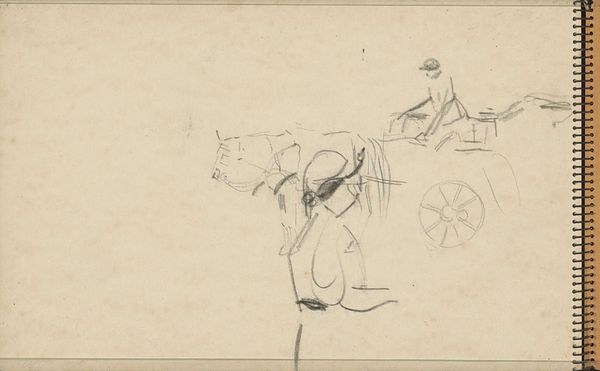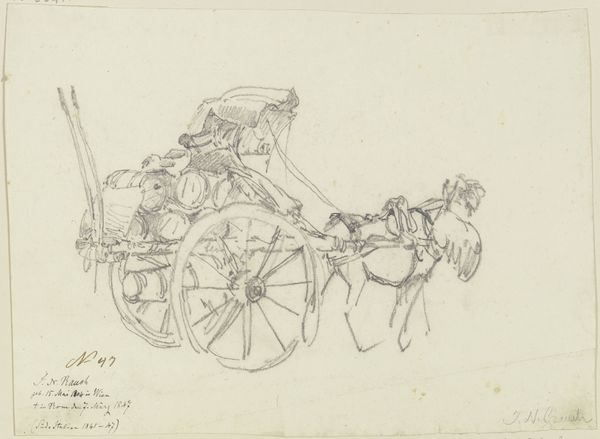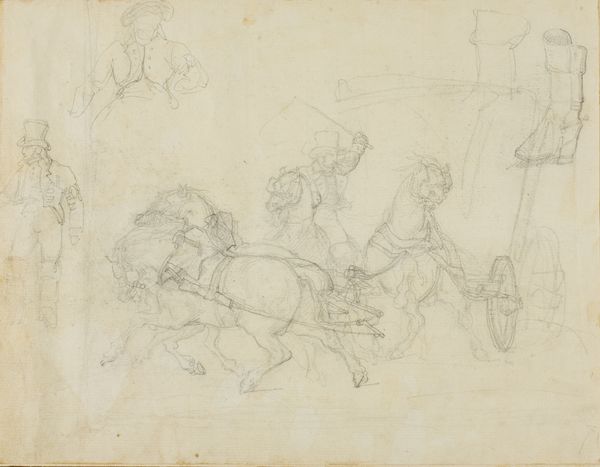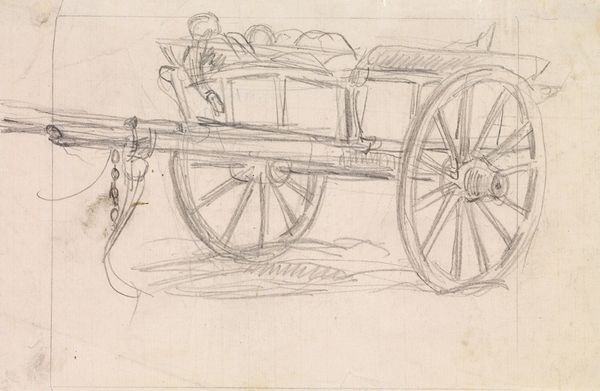
drawing, print, paper, graphite
#
drawing
#
narrative-art
# print
#
landscape
#
figuration
#
paper
#
romanticism
#
france
#
graphite
#
history-painting
Dimensions: 222 × 285 mm
Copyright: Public Domain
Curator: What a whirlwind of conflict captured in delicate graphite lines! This is Théodore Géricault's "Study for Caisson d'artillerie," created around 1818, now residing here at The Art Institute of Chicago. Editor: It feels so raw and immediate, almost like we’re eavesdropping on a pivotal moment on the battlefield. I’m struck by the central figure, towering on that artillery caisson – a symbol of authority, but also a precarious vulnerability. Curator: Precisely! Géricault's interest lay in portraying not just the grand narratives of warfare, but also its psychological impact on those involved. The caisson, carrying ammunition, becomes a stage for the drama unfolding. It's fascinating how Géricault challenges heroic norms by showing scenes that also depict ordinary military personnel, exposing viewers to their world of emotions and everyday strife. Editor: And look at the gesture – that outstretched arm, pointing or perhaps commanding. Is it defiance, desperation, or a cold calculation? The way the rest of the figures respond seems to indicate some level of terror; but the artist's chosen tool - a light graphite lends a delicate tone, which only creates an eery atmosphere. Curator: His imagery taps into the grand narratives of French military history, but it's undeniably infused with the Romantic spirit—emotionally charged and with keen emphasis on dramatic tension. This echoes the era of social upheaval and nationalistic sentiments that reverberated throughout Europe at that time. We shouldn't neglect how this was the period where France experienced a constant power change and continuous attempts to revert the sociopolitical status. Géricault and many others felt strongly that the revolution was nowhere near completion and the current structure far from a fair social and governmental structure. Editor: Symbols of war often carry contradictory weight, evoking national pride while simultaneously signifying human suffering. What’s striking here is how Géricault's skill invites us to hold both in our minds, forcing the audience to grapple with this duplicity, which lends a strange kind of moral value to his artworks. It serves as a stark visual reminder of historical lessons and tragedies of the era. Curator: A sketch like this truly embodies the turmoil of its age – questioning power structures, and underscoring the fragility of human life amidst grand narratives of conflict. Editor: A lasting commentary that stays etched, like these graphite lines, long after the battles fade from memory.
Comments
No comments
Be the first to comment and join the conversation on the ultimate creative platform.
